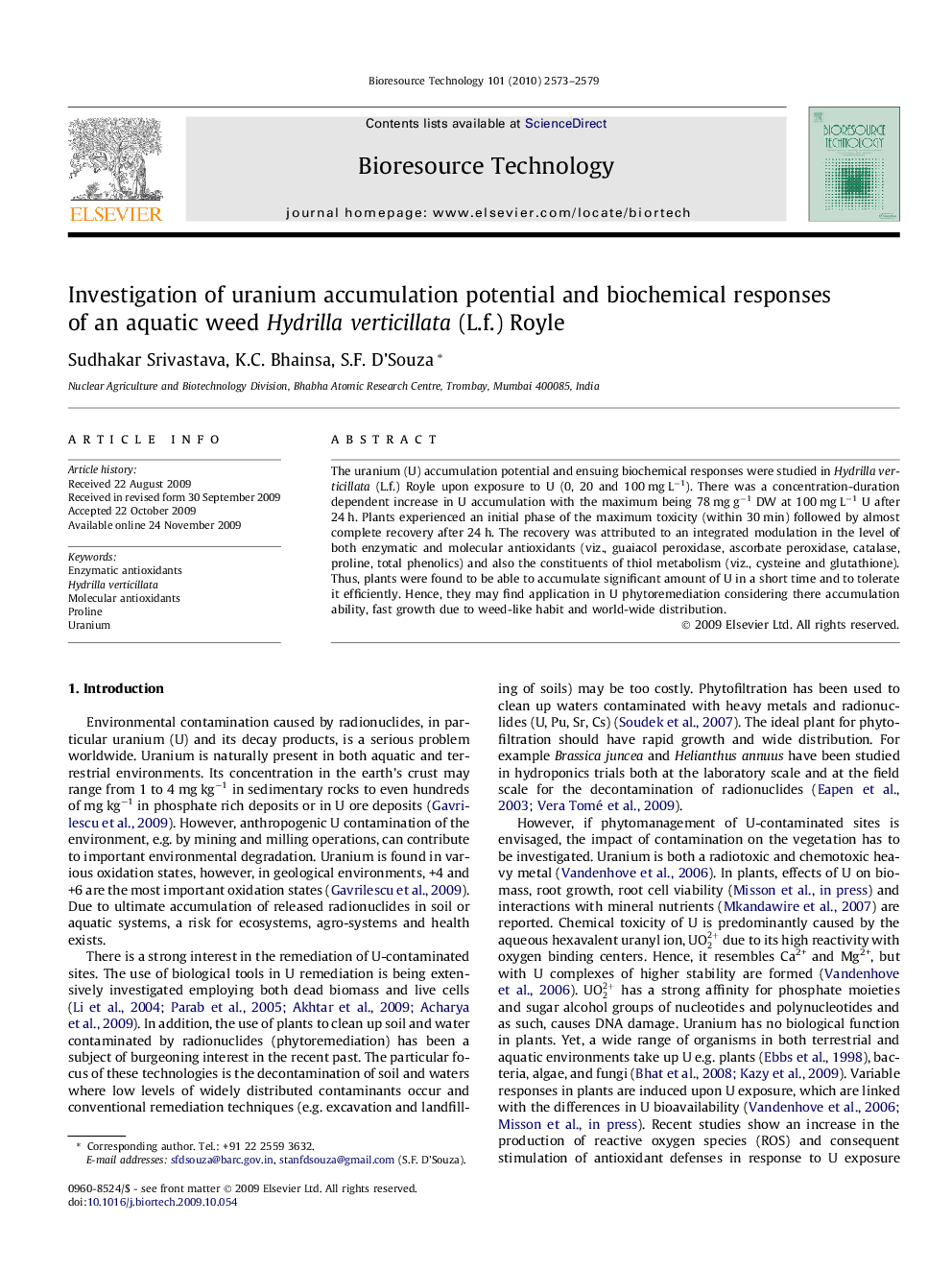| Article ID | Journal | Published Year | Pages | File Type |
|---|---|---|---|---|
| 683018 | Bioresource Technology | 2010 | 7 Pages |
The uranium (U) accumulation potential and ensuing biochemical responses were studied in Hydrilla verticillata (L.f.) Royle upon exposure to U (0, 20 and 100 mg L−1). There was a concentration-duration dependent increase in U accumulation with the maximum being 78 mg g−1 DW at 100 mg L−1 U after 24 h. Plants experienced an initial phase of the maximum toxicity (within 30 min) followed by almost complete recovery after 24 h. The recovery was attributed to an integrated modulation in the level of both enzymatic and molecular antioxidants (viz., guaiacol peroxidase, ascorbate peroxidase, catalase, proline, total phenolics) and also the constituents of thiol metabolism (viz., cysteine and glutathione). Thus, plants were found to be able to accumulate significant amount of U in a short time and to tolerate it efficiently. Hence, they may find application in U phytoremediation considering there accumulation ability, fast growth due to weed-like habit and world-wide distribution.
